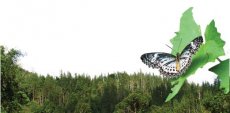Environmental Issues in Sri Lanka
There can be no economy when there is no efficiency
-Benjamin Disraeli-Letters
This column dedicated to the notion of fulfilling the aspirations of Sri Lankan society turns its spotlight on the protection of the environment in Sri Lanka while engaging in sustainable development that will fulfill the aspirations of all Sri Lankans thereby ensuring preservation of the environment in our land.
 Environmental concerns in Sri Lanka include deforestation; soil erosion; wildlife populations threatened by poaching and urbanization; coastal degradation from mining activities and increased pollution; freshwater resources being polluted by industrial waste and sewage runoff; waste disposal; and air pollution in Colombo and other cities due to emissions from motor vehicles and factories and other industrial establishments.
Environmental concerns in Sri Lanka include deforestation; soil erosion; wildlife populations threatened by poaching and urbanization; coastal degradation from mining activities and increased pollution; freshwater resources being polluted by industrial waste and sewage runoff; waste disposal; and air pollution in Colombo and other cities due to emissions from motor vehicles and factories and other industrial establishments.
The forests in Sri Lanka have been removed to make way for agricultural land and plantations and to provide fuel and timber. The sale of timber is a part of the national economy to raise revenue. The country is a major producer of tea and the land required for tea plantations is substantial. Population pressure is also a significant factor as is the removal of forested areas to make way for irrigation networks which were a major process in the 1980s. Apart from the environmental implications deforestation in Sri Lanka has caused ill effects such as flooding, landslides and soil erosion from exposure of the deforested areas. It is also the primary threat to the survival of Sri Lanka’s biodiversity. Sri Lanka has 751 known species of amphibians, birds, mammals and reptiles of which 21.7 percent are endemic, and over 3314 species of vascular plants, of which 26.9 percent are endemic.
One of the main threats to the sustainability of Sri Lanka’s forests is government development policies in relation to the demand for timber and fuel and also the need to create plantations to raise revenue. Government policies are focused primarily on timber production and tree plantations. The Sri Lankan government working in conjunction with multi-national institutions has seen a major change in timber harvesting in Sri Lanka for the cause of sustainable development. Commercial plantations have gradually been brought under management system in Sri Lanka to produce wood in an economically efficient and sustainable way.
The harvesting, processing and the sale of wood products from state forests is conducted by the state owned State Timber Corporation. In the 1980s the cause progressed significantly with the Asian Development Bank (ADB) funding the Community Forestry Project (CFP) which concentrated on the development of fuelwood plantations and agro-forestry in 5 of the 25 districts of Sri Lanka. While illegal logging in Sri Lanka is not a major problem as it is in many countries, deforestation has still affected the lives of every day people in some parts of Sri Lanka where removal of forests has resulted in greater time and energy being spent gathering firewood typically by women who have to travel relatively long distances, affecting their health and well-being. Deforestation is one of the most serious environmental issues in Sri Lanka. In the 1920s, the island had a 49 percent forest cover but by 2005 this had fallen by approximately 20 percent. Between 1990 and 2000, Sri Lanka lost an average of 26, 800 hectares of forests per year. This amounts to 1.14 percent of average annual deforestation rate. Between 2000 and 2005 the rate accelerated to 1.43 percent per annum.
However with a long history of policy and laws towards environmental protection, deforestation rates of primary cover have actually decreased to 35 percent since the end of the 1990s due to a strong history of conservation measures. The problem of deforestation in Sri Lanka is not as significant in the southern mountainous regions as it is in northern Sri Lanka, largely due to the nature of environmental protection.
The government and international environmental organizations have taken several steps to address the problem over the years, establishing national parks, reserves and sanctuaries, which now cover as much as 15 percent of the island’s total area as at 2007. The Sinharaja Forest Reserve, which was established in 1978 to protect the nearly extinct tropical lowland rain forest, was flagged as a World Heritage Site in 1988.
The history of environmental policy and law in Sri Lanka however goes back much further in history. In 1848, the Timber Ordinance No. 24 was signed for the reservation of forests, largely for timber production. In 1873, Hooker advocated the protection of natural forests above 5000 feet as climatic reserves and in 1938 a law was passed prohibiting the removal of forest above 5000 feet. In 1885, the Forest Ordinance No. 10 for the Conservation of Forests saw some protection of forests primarily for sustainable wood production but also some protection of...









